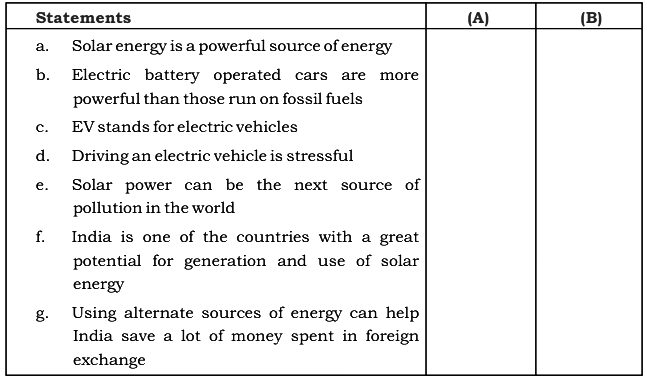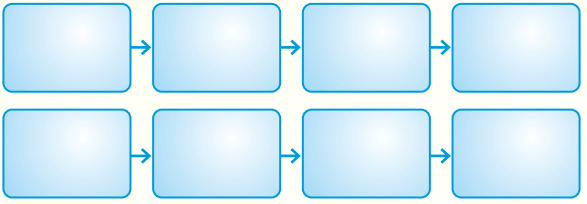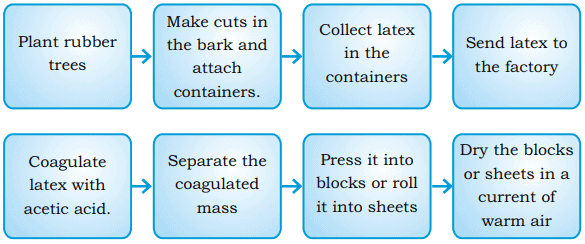Promise For The Future: Renewable Energy NCERT Solutions | Communicative English for Class 10 PDF Download
Introduction
From Carelessness to Car-LessnessThe harmful gases emitted into the atmosphere from the vehicles are polluting the environment, especially the air we breathe. All of us have to take action individually and collectively to reduce air pollution as much as we can. So be an eco-journalist and do your bit to help reduce air pollution. And the first step towards saving the environment is to know where we stand.
Carrying out a door to door survey
- Find out how your friends and neighbours commute to school or office \ Interview at least 10 friends or neighbours who commute to school or office by personal cars.
- Find out if they would be ready to switch to a non-polluting mode of transport, like a bicycle, if their schools or offices are not too far away.
- Find out if they would like to join a carpool or travel by public transport. Do not forget to mention the advantages of shifting from the use of personal vehicles, such as reduced pollution, savings and companionship.
- If they are not interested and would like to continue travelling in their private cars, ask them the reasons why would they not make the change.
After collecting all the data, fill in a table like the one given below:
At the end of your survey, find out how many interviewees are now travelling by bicycle, public transport, or car pool and how many have decided not to do so.
- Number of people interviewed
- Number of people who commute by private car
- Number of people who have agreed to change their mode of transport
- Number of people who now travel by public transport
- Number of people who have joined a carpool
- Number of people who are now cycling to work
- Number of people who have not changed their mode of transport
 Ans:
Ans:
A3. Now go back to A.I. and complete column (B). How much did you know already before you read the article ?
Ans:

A4. Complete the following blanks with information from the passage :
(a) India receives 5000 trillion kWh/year which means ________ .
(b) The advantages of using solar energy instead of fossil fuels is that it is ________ .
(c) It is important to find means of keeping air and noise pollution in urban areas under control because ________ .
(d) Tax exemptions and subsidies are required to ________ .
(e) The media can help by ________ .
Ans:
(a) that the country can get 5000 trillion kW of solar energy in a year. It is far more than its annual energy consumption.
(b) renewable, clean and easily available
(c) of ever increasing pollution levels which is harmful for human race
(d) promote the usage of electric vehicles
(e) playing its role in educating the public about alternate fuel vehicles and their advantages.
A5. Copy and complete the following table with the required information from the passage Ans:
Ans:
A6. Based on your reading of the passage say whether the following statements are True or False :
(a) EV’s have the potential to flourish in India
(b) EVs degrade with time
(c) EVs can create health hazards
(d) EVs cannot drive fast because they have only two pedals
(e) Solar power will not last for a very long time in our country
(f) Establishing Solar Power generating units is too expensive
Ans:
(a) True
(b) False
(c) False
(d) False
(e) False
(f) True (cost of equipments is costly)
A7. You are going to listen to a presenter discussing three new inventions-The Solerickshaw, the Green Phone and the Solar Water Purifier. As you listen complete the notes given below :
Solar Powered Inventions
I. Solerickshaws
- Features
i. ……………
ii. ……………
iii. ……………
iv. …………….. - Designed and developed by ……………
II. Green Phones
- Blue Earth developed by……………
i. back with…………………………….
ii. made from……………………………
iii. CO2 emissions monitored by……………
iv. fits into………………………………….. - Coral 200
i. powered by…………………..
ii. fits……………………………
iii. made by ……………………..
iv. talk time……………. for every ……..of sunlight - LG
i. ………….mins. of talk time for …………of sunlight
ii. Bluetooth solar car kit called………………………..
iii. features
a).…………………
b)……………….
III. Solar water purifier
- first type features
i. ………………….
ii. ………………… - second type features
i. ………………….
ii.…………………
iii. process of distillation
a. water heated by…………………
b. water condenses on……………..
c. impurities collected in ………….
d. water collected in……………….
e. from trough into…………………
f. germs and bacteria killed by……………
I. Solerickshaws
- Features
(i) pedal-operated
(ii) motor-assisted three-wheeler
(iii) battery powered by solar energy
(iv) zero-carbon urban transport vehicle - a team of Engineers from the Central Mechanical Engineering Research Institute (CMERI), Durgapur, West Bengal.
II. Green Phones
- Blue Earth developed by → Samsung
(i) back with → a full solar panel
(ii) made from → recycled plastic
(iii) CO2 emissions monitored by → built in pedometer
(iv) fits into → your pocket - Coral 200
(i) powered by → Solar energy
(ii) fits → into your pocket and your budget
(iii) made by → ZTE the Chinese mobile manufacturer
(iv) talk time fifteen minutes for every one hour of sunlight - LG
(i) three mins, of talk time for ten minutes of sunlight
(ii) Bluetooth solar car kit called → HFB-500
(iii) features
(i) hands-free
(ii) fully rechargeable unit
III. Solar water purifier
- First type features
(i) twelve volt water purifier
(ii) more potable - Second type features
(i) distillation without electricity
(ii) relatively inexpensive
(iii) process of distillation
(a) water heated by → sun rays
(b) water condensation on → the underside of solar panel
(c) impurities collected in → a box
(d) water collected in → a trough
(e) from trough into → the collection bottles
(f) germs and bacteria killed by → UV rays from the sun.
A8.You have listened to a presentation on three new inventions. One of them is solar water purifier. The stages of water purifier can be set in a flow-chart. Copy and complete the following flow chart with the stages in their correct order.

1. impurities of water remain in the box
2. sun rays heat the water
3. box filled with unpurified water
4. solar panel is placed on top of a rectangular shaped box
5. water condenses on the underside of the solar power
6. slope of the panel allows water to be collected in the trough.
7. bottles collect water from trough
Ans:
Stages in correct order :
- solar panel is placed on top of a rectangular shaped box
- box filled with unpurified water
- sun rays heat the water
- water condenses on the underside of the solar power
- impurities of water remain in the box
- slope of the panel allows water to be collected in the trough
- bottles collect water from trough
A9. Now read that portion of the listening text describing the solar distillation system :
You will notice that each sentence is connected with the next one and when we describe a process we use sequence markers like- at first; next; then; now; additionally;
The other commonly used sequence markers are
- first, second, third----
- at the same time, simultaneously—
- finally, lastly, in the end, to conclude—
You may also have observed that the writer has used a combination of Active forms (e.g. the water droplets condense on the underside of the solar panels) to emphasize the 'doer' of the action and Passive forms (e.g. the box is filled with unpurified water) when he wants to stress that the action 'is filled'.
Another feature of a process description is that the writer normally uses the simple present tense, because he describes what always happens in the particular process.
Ans: Please do it on your own.
A10. Below is a flow chart describing the process of making rubber. Use it to help you copy and complete the process description that follows it. Remember to use the simple present tense, a mixture of actives and passives, and to add sequence markers where you see
First rubber trees …….. in deep soil.*. when the trees …, fully ….., the bark of the tree …. and containers …. The latex …….. and is ……. to the factory. Here it ….. by treating it with acetic acid* the coagulated mass ….. It is then ….. into blocks or ….. into sheets. * …. in a current of warm air.
Check: What tense did you use? Did you use sequence markers? Did you use a mixture of actives and passives?
Ans: First rubber trees are planted in deep soil. When the trees are cut, fully the containers are attached to, the bark of the tree ….. and containers are filled with latex. The latex is collected and is sent to the factory. Here it is coagulated by treating it with acetic acid. The coagulated mass is then separated. It is then pressed into blocks or rolled into sheets. After that blocks or sheets are dried in a current of warm air.
We use Simple Present Tense along with sequence markers. Yes, we have used mixture of actives and passives.
- The tense used was Present Tense
- Sequence markers were used
- Both Active and Passive Voices were used
A11. You have been gifted a new cell phone which is powered by solar energy. Write an email to your friend describing the phone and all its exciting features. You may use the notes that you have made in A.7.
While writing this email, remember to:
- Start with writing your friend’s email ID
- Mention the subject clearly
- Begin with Dear ........ followed by a greeting and enquire about their wellbeing
- Tell them your reason for writing.
- Describe your phone and your excitement on getting the gift.
- Close with a promise to write back again, and express hope to hear from your friend.
- Sign off by writing ‘Yours affectionately’ and your name.
Ans:
Date : May 11, 20 – –
From : renumalik@gmail.com
To : mehakgupta@yahoo.com
Subject : New Cell phone : Solar 777
Dear Mehak
I hope my letter will find you all, in the best of health and spirits. I was mightily thrilled to receive two books ‘The Tinkler’s Question’ and ‘The Immortals of Meluha’ that you sent lately.
I apprise you of the most wonderful gift that has made a difference to me. I am sure it will also change the mindsets of the entire country, once it becomes popular. The new cell phone ‘SOLAR’ 777 is powered by solar energy. Realising the side- effects of mobile-phones, many manufacturers are going green while others are going solar. Three cheers for Samsung that has introduced the solar-powered phone. It is a touch phone that has full solar panel on its back. This panel can generate enough power to charge the phone. It has a built-in pedometer to keep a tab on the carbon dioxide emissions. And …more important, it fits into your pocket and your budget constraints. It provides fifteen minutes of talktime for every hour of sunlight. Isn’t it a wonderful invention ?
I shall gift you Coral 200, a solar-powered handset from Chinese mobile manufacturer ZTE on your birthday.
Bye ! Stay in touch.
Your friend
Renu
|
8 videos|250 docs|8 tests
|
FAQs on Promise For The Future: Renewable Energy NCERT Solutions - Communicative English for Class 10
| 1. What are renewable energy sources mentioned in the article? |  |
| 2. Why is renewable energy important for the future? |  |
| 3. How can individuals contribute to the use of renewable energy? |  |
| 4. What are the challenges in transitioning to renewable energy? |  |
| 5. How does renewable energy impact the environment compared to fossil fuels? |  |
















